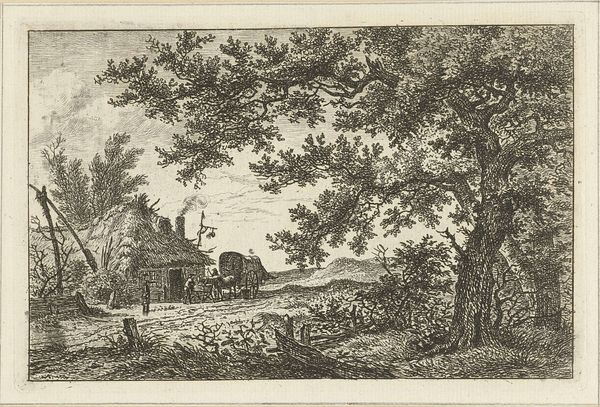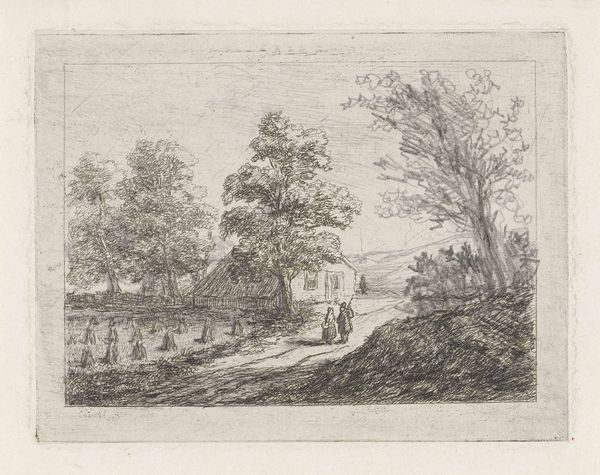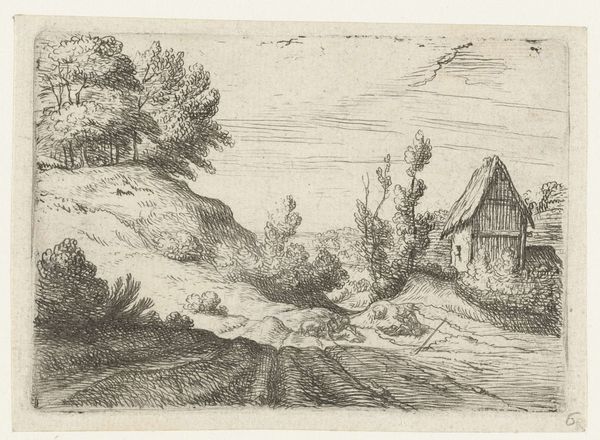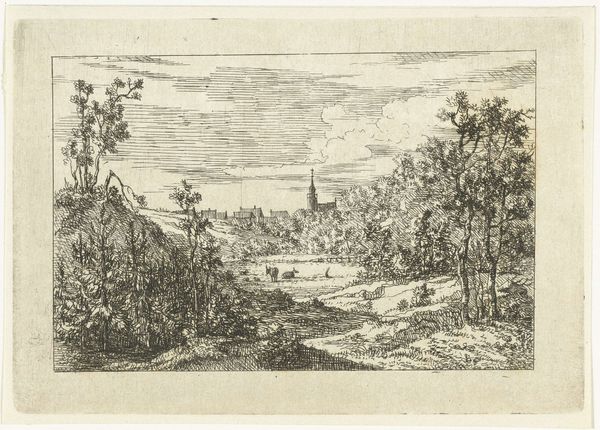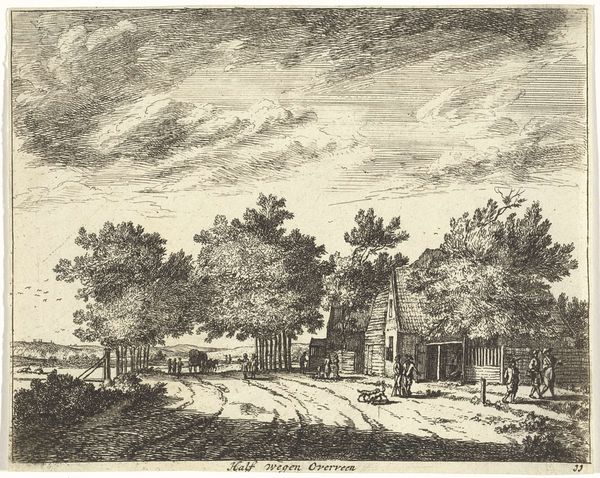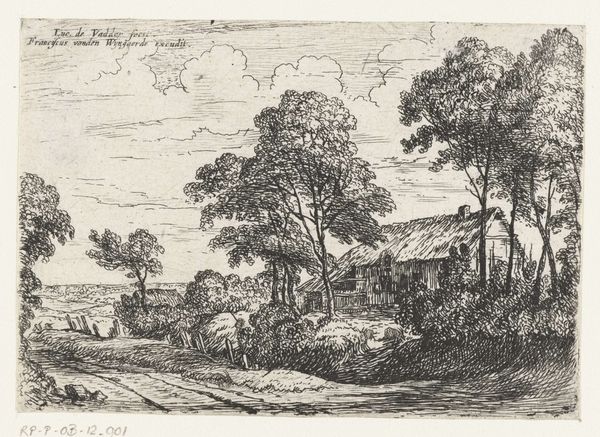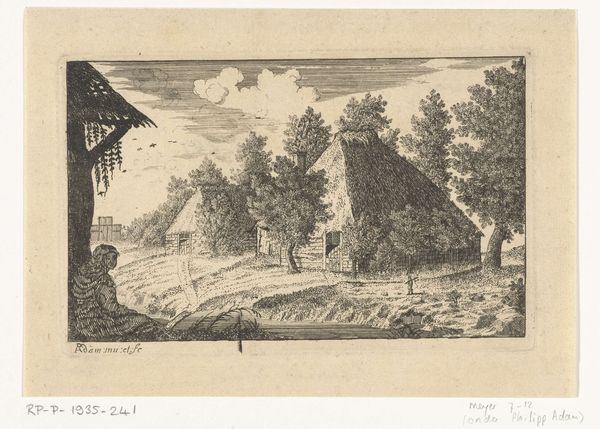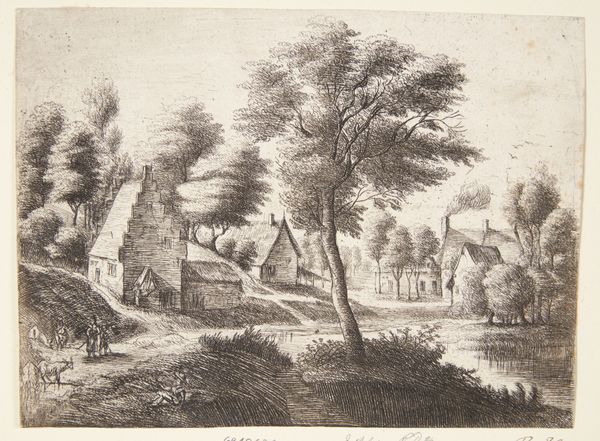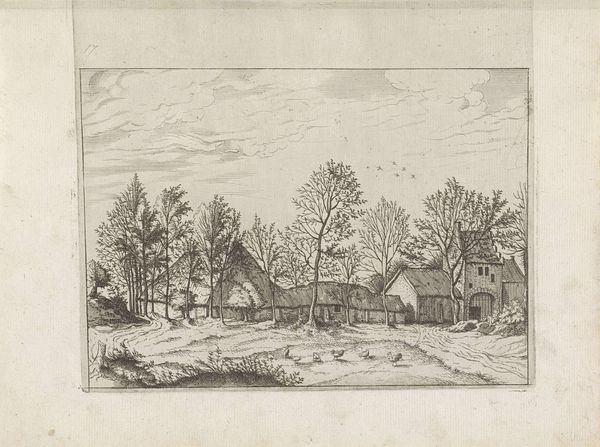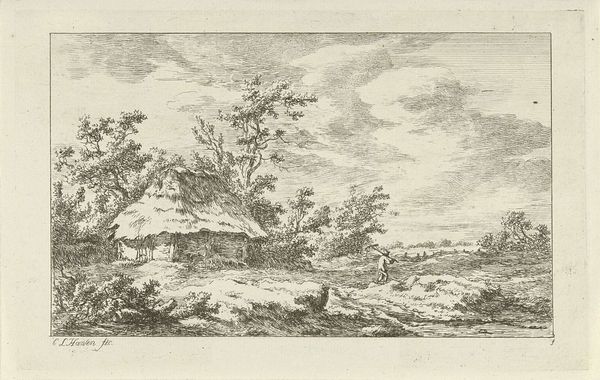
print, etching
# print
#
etching
#
landscape
#
etching
#
romanticism
Dimensions: height 75 mm, width 115 mm
Copyright: Rijks Museum: Open Domain
Editor: This etching, titled "Gezicht op Lechhausen bij Augsburg," made sometime between 1798 and 1837 by Ernst Willem Jan Bagelaar, it's incredibly detailed. I’m struck by the contrast between the looming sky and the everyday scene of a figure walking on a country path. What do you see in this piece? Curator: Well, as a historian, I'm immediately drawn to how this etching engages with the emerging concept of nationhood during that period. Landscapes were rarely just pretty pictures, but rather reflections on place and belonging. Bagelaar presents us not just with a town, but a visual assertion of Dutch identity through the idealized depiction of its landscape and people. Do you notice how orderly, even idyllic, it appears? Editor: I do see that now! It definitely feels... curated. Almost like a stage set. Curator: Precisely! Consider the socio-political backdrop. This period saw increasing national pride coupled with anxiety about change, so an idealized vision of the homeland would be especially potent. Even the deliberate choice of etching—a reproducible medium—contributed to disseminating and standardizing this image for a wider audience, reinforcing the intended message. How do you think the accessibility of printmaking impacts its reception? Editor: I never thought of that! That’s so clever. Because it’s not a painting in a gallery that only a few people might see; instead it’s this thing that many can have. It really changes who gets to engage with the artwork. I'll have to look at etchings with fresh eyes going forward. Curator: Exactly! It opens up avenues for democratizing art appreciation. And that’s a key function art can have within culture. This exploration definitely expanded my thoughts too on how a print's social and historical value can impact an artwork!
Comments
No comments
Be the first to comment and join the conversation on the ultimate creative platform.



